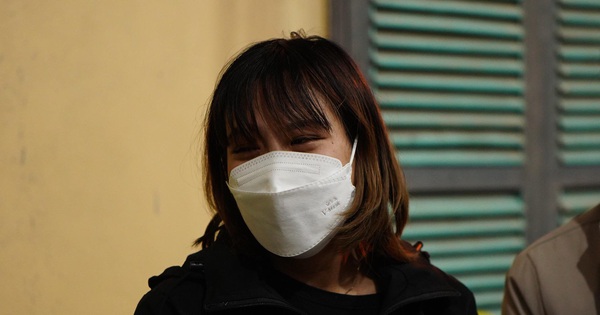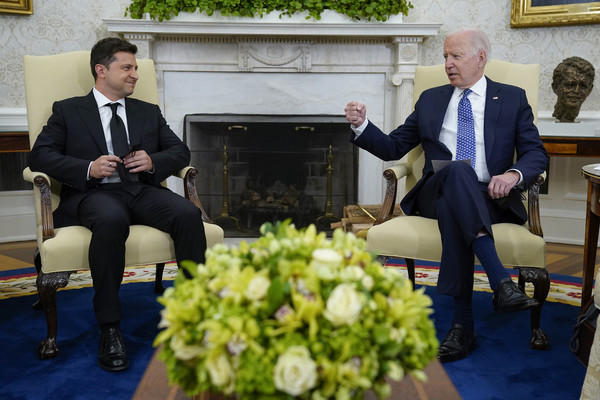Excessive foreign borrowing for infrastructure projects without a reasonable source of income to repay the debt is believed to be the cause of pushing Sri Lanka into crisis.
Facing its worst economic crisis since independence in 1948, Sri Lanka on April 12 declared it would not be able to pay its $51 billion foreign debt.
“We have lost our ability to repay our foreign debt,” Central Bank Governor Nandalal Weerasinghe told reporters in the capital Colombo about the default declaration.

A man rests his head while waiting in line to buy diesel fuel in Colombo, Sri Lanka, on April 7. Image: Reuters.
The suspension of foreign debt payments is a last resort for Sri Lanka while it is trying to save cash for urgent supplies such as fuel, food, medicine or essential items. other weak. However, analysts say that Sri Lanka’s current crisis is caused by generous external loans and mismanagement.
After gaining independence from the British in 1948, Sri Lanka focused on agricultural development, mainly focusing on the development of export crops such as tea, coffee, rubber and spices. A large part of Sri Lanka’s gross domestic product (GDP) comes from the foreign exchange earned from the export of these crops. That money is used to import essential food items.
Tea is one of Sri Lanka’s key export products. The country became the world’s largest tea exporter in 1995, with a 23% share of the global market. The tea industry will bring in $1.3 billion in revenue in 2021, according to Sri Lankan Tea Association President Jayampathy Molligoda.
In the early 2000s, Sri Lanka began to develop the food processing, textile, and telecommunications industries. The island nation also promotes garment exports and attracts foreign currency from tourism and remittances. Revenue from textile exports of Sri Lanka in 2020 reached 4.4 billion USD.
However, after winning the 2004 elections, the new government of the People’s Union for Freedom of Freedom launched the Rata Perata Economic Program, with the goal of protecting the economy against external influences. apart from the price of oil.
To implement the subsidy program, the Sri Lankan government had to spend its budget on importing most of the fuel and other essential products. The subsidy burden was so great that the government had to print an additional 65 billion rupees ($650 million), driving inflation to 18 percent in 2005.
Due to its overdependence on agricultural and textile exports, any negative impact in this sector would create a shock to the Sri Lankan economy and put foreign exchange reserves under strain. Jo Adetunji, economic commentator of Conversationsaid.
That situation makes Sri Lanka often face balance of payments crisis and is forced to rely on external borrowing to cope. Since 1965, the country has received 16 loans from the International Monetary Fund (IMF), each loan comes with conditions such as reducing the budget deficit, maintaining a tight monetary policy, cutting subsidies. government for food for the people and depreciating the currency, so that exports will be more sustainable.
Usually during economic downturns, governments pump more money to stimulate the economy. This became impossible for Sri Lanka due to the IMF’s binding conditions. Despite that fact, IMF loans continued to be passed on to Sri Lanka, increasing the debt.
The most recent IMF loan to Sri Lanka was in 2016, which helped the country receive $1.5 billion over the next three years. Conditions remained unchanged and the health of the Sri Lankan economy began to deteriorate sharply during this period. Growth, investment, savings and revenue all fell, while the debt burden increased.
Not only receiving money from the IMF, Sri Lanka also borrows from many other countries, of which China is the most generous partner, with a debt of about 8 billion USD, accounting for nearly 16% of Sri Lanka’s total external debt, followed by Japan and India.
Since 2005, the Sri Lankan government has repeatedly signed Chinese loan agreements for infrastructure projects such as seaports and airports. However, many projects become unprofitable burdens. China is also involved in a $13 billion project to develop a coastal economic center in Colombo and an airport in Hambantota.
Sri Lanka’s ability to repay debt has been questioned since 2017, when the country agreed to lease the Hambantota port to a Chinese partner for 99 years because it could not repay the $1.4 billion loan borrowed from Beijing to build the port. port construction.
According to Times of India, Unconditional loans from China for unprofitable infrastructure projects have largely helped push Sri Lanka into its current situation.
Sri Lanka has long struggled to pay off foreign loans. The situation worsened with a series of economic shocks in 2019. The first was a series of terrorist bombings at churches and luxury hotels in Colombo in April 2019, causing tourist numbers to drop by as much as 80%, depleting an important source of foreign currency revenue.
The next shock occurred when the new government of President Gotabhaya Rajapaksa decided to simultaneously reduce taxes. Value added tax is reduced from 15% to 8%. Other indirect taxes such as national construction taxes, payroll taxes and economic service fees are abolished. Corporate tax reduced from 28% to 24%. About 2% of GDP was lost as a result of these tax cuts.
In March 2020, the Covid-19 pandemic broke out in Sri Lanka, causing tourism revenue to almost disappear. In April 2021, to prevent the risk of depleting foreign exchange reserves, the Rajapaksa government made another mistake, when it banned the import of fertilizers completely.
This decision deals a heavy blow to Sri Lankan agriculture, especially tea and rubber, two key export products. Output of these commodities plunged, inflation increased and Sri Lanka from a rice self-sufficient country had to import food in only 6 months.
Although the fertilizer import ban was withdrawn in November, this policy has had irreversible consequences, making the need to import goods all the more urgent. Due to low export earnings, Sri Lanka had less money to import food and food shortages began to arise.
As food and other essential items became scarce but demand did not fall, their prices rose rapidly. In February, Sri Lanka’s inflation stood at 17.5%. Sri Lanka’s economic crisis is so bad that people are scrambling for even the most essential daily necessities.
When Sri Lanka ran out of foreign currency to import, people often suffered power outages for more than 12 hours a day because generators ran out of diesel fuel to run. Public anger has increased, sparking a wave of protests that have escalated violently over the past time, demanding President Rajapaksa’s resignation.
“The government of President Rajapaksa should have scrapped some Chinese-invested infrastructure projects, which had high debt management fees but low profit margins. They should have increased agricultural production instead of going out. ban on import of chemical fertilizers,” said Seshadri Chari, an Indian strategic and foreign policy analyst, adding that the tourism industry should have been focused on recovering from the Covid-19 pandemic. .
Sri Lanka has about $4 billion in foreign debt payments due this year, including a $1 billion international bond due in July.
Estimates suggest that Sri Lanka needs $7 billion to repay its debt this year, while foreign currency reserves are only about $1.9 billion by the end of March. For a country that’s heavy on energy imports. , food, essential goods and pharmaceuticals like Sri Lanka, such a low level of foreign currency reserves is a nightmare, Chari said.

The ship docked at Hambantota, Sri Lanka in 2015. Photo: AFP.
Some analysts have criticized President Rajapaksa’s administration for its decision to cut taxes in 2019 and delay debt settlement negotiations with the IMF, leading to the current default.
Sri Lanka also asked China to cancel its debt, but was not accepted. Beijing has vowed to “do its best to support Sri Lanka’s economic and social development”, but has not made any commitments on loan adjustments.
“Sri Lanka should blame itself for receiving large loans from abroad, but it does not have a strong economic foundation and does not have a reasonable repayment plan,” said Antara Ghosal Singh, an expert at the Research Foundation. Observer (ORF) in New Delhi, commented.
Vu Hoang (According to Conversation, Times of India)
at Blogtuan.info – Source: vnexpress.net – Read the original article here



